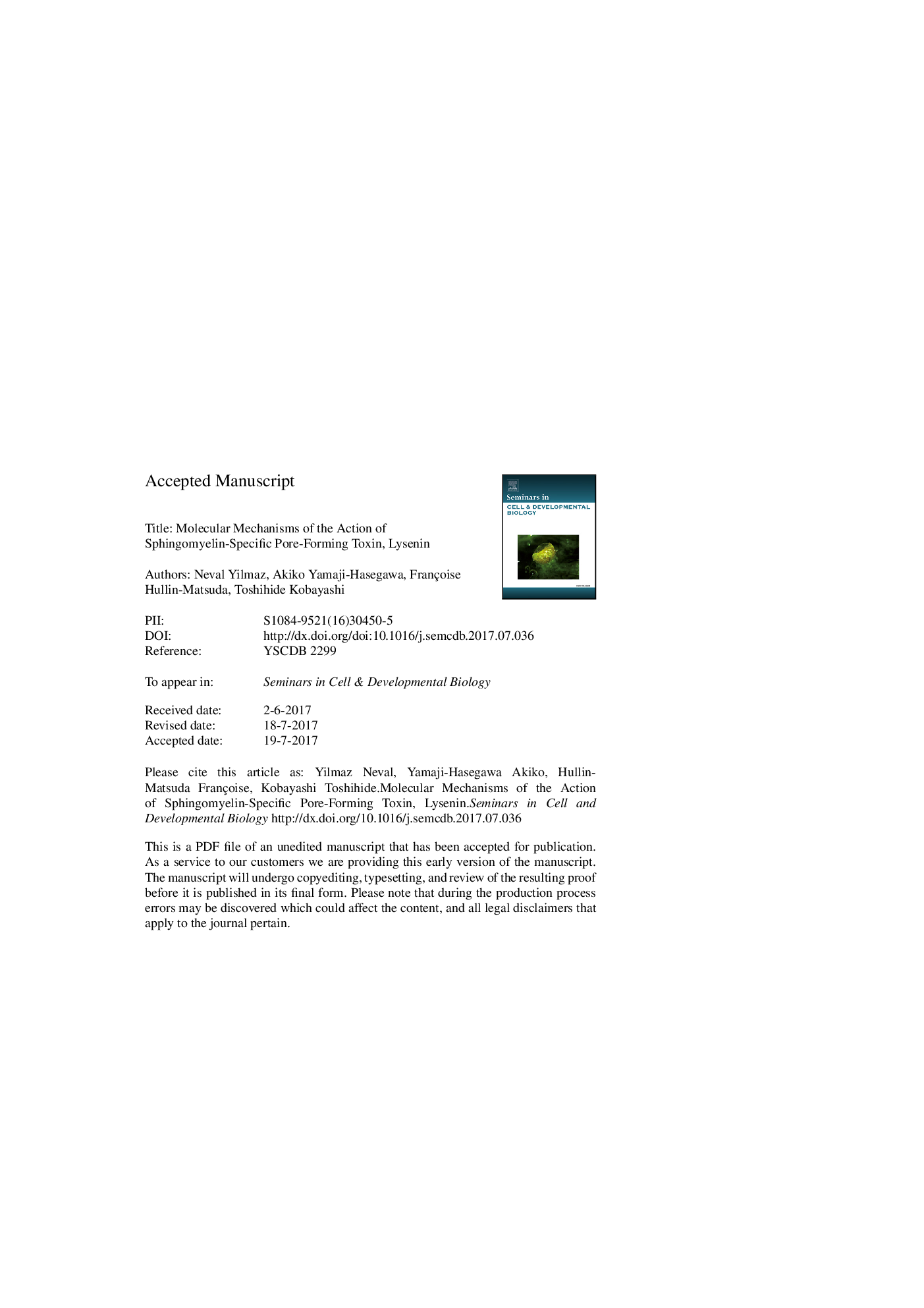| Article ID | Journal | Published Year | Pages | File Type |
|---|---|---|---|---|
| 8479883 | Seminars in Cell & Developmental Biology | 2018 | 31 Pages |
Abstract
Lysenin, which is an earthworm toxin, strongly binds to sphingomyelin (SM). Lysenin oligomerizes on SM-rich domains and can induce cell death by forming pores in the membrane. In this review, the assembly of lysenin on SM-containing membranes is discussed mostly on the basis of the information gained by atomic force microscopy (AFM). AFM data show that lysenin assembles into a hexagonal close packed (hcp) structure by rapid reorganization of its oligomers on an SM/cholesterol membrane. In case of a phase-separated membrane of SM, lysenin induces phase mixing as a result of pore formation in SM-rich domains, and consequently its hcp assembly covers the entire membrane. Besides the lytic action, lysenin is important as an SM marker and its pore has the potential to be used as a biosensor in the future. These points are also highlighted in this review.
Keywords
AFMLyseninDOPCPFTOligomerPIP2DPPCHCPGSTCDCDLPCMBPNanoSIMSDilauroylphosphatidylcholineCHOLEquinatoxin IIsphingomyelinTempore-forming toxindioleoylphosphatidylcholinedipalmitoylphosphatidylcholineHexagonal close packedphosphatidylinositol bisphosphateLiquid orderedLiquid disorderedphase mixingPhase boundaryTransmission electron microscopyatomic force microscopyPhase coexistencemaltose-binding proteinPoreSMScholesterolglutathione-S-transferase
Related Topics
Life Sciences
Biochemistry, Genetics and Molecular Biology
Cell Biology
Authors
Neval Yilmaz, Akiko Yamaji-Hasegawa, Françoise Hullin-Matsuda, Toshihide Kobayashi,
